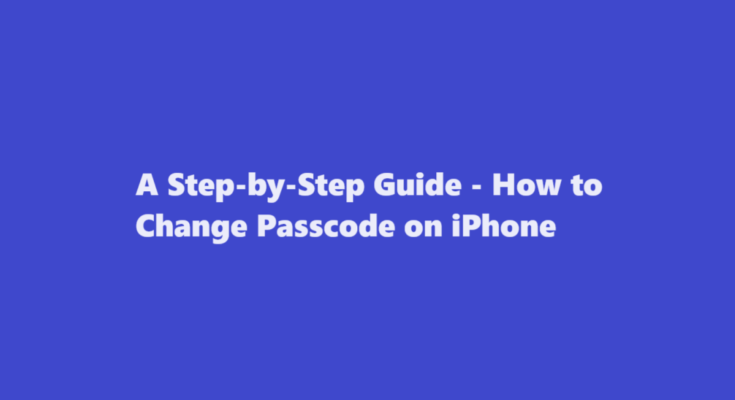Introduction
In today’s digital age, securing your personal information is of utmost importance. One of the first lines of defence for your iPhone is your passcode. Changing your passcode regularly is a simple yet effective way to enhance your device’s security. In this article, we will walk you through the step-by-step process of changing your passcode on an iPhone.
Accessing Passcode Settings
To change your iPhone’s passcode, you’ll need to access the Passcode settings. Here’s how
1. Unlock your iPhone using your current passcode or Face ID/Touch ID.
2. Open the “Settings” app, which looks like a gear icon.
2. Navigate to Face ID & Passcode or Touch ID & Passcode
The steps may slightly vary depending on your iPhone model and the iOS version you’re using:
For Face ID-enabled devices
Scroll down and tap on “Face ID & Passcode.”
For Touch ID-enabled devices
Scroll down and tap on “Touch ID & Passcode.”
Enter Your Current Passcode
To make any changes to your passcode, you’ll need to confirm your current passcode. Enter it when prompted.
Choose “Change Passcode”
After successfully entering your current passcode, you’ll see the option to “Change Passcode.” Tap on it to proceed.
Enter Your Current Passcode Again
To ensure that you have permission to change the passcode, you’ll need to re-enter your current passcode.
Enter a New Passcode
Now, it’s time to set a new passcode. You can choose a simple 4-digit passcode or a more complex alphanumeric one for added security. To select a custom alphanumeric passcode
1. Tap on “Passcode Options” located just below the numeric keypad.
2. Choose “Custom Alphanumeric Code.”
3. Enter your new passcode, which must be at least eight characters long and include a combination of letters, numbers, and symbols.
4. Confirm your new password by entering it again.
Confirm Your New Passcode
You’ll be prompted to re-enter your new passcode to ensure accuracy.
Updating Your Passcode
Once you’ve successfully confirmed your new passcode, it will replace your old one. Your iPhone is now secured with the updated passcode.
Tips for a Secure Passcode
Changing your passcode is a great opportunity to strengthen your device’s security. Here are some tips for creating a strong passcode
- Avoid Obvious Choices Don’t use easily guessable passwords like “1234,” “0000,” or “password.”
- Use a Mix of Characters Combine uppercase and lowercase letters, numbers, and special symbols for added complexity.
- Avoid Personal Information Steer clear of passcodes that are based on easily accessible personal information, such as birthdays or names.
- Longer is Better Longer passwords are generally more secure. Aim for at least eight characters.
- Consider Passphrases Instead of a single word, consider using a passphrase—a sequence of random words that are easy for you to remember but difficult for others to guess.
- Change It Regularly Make it a habit to change your passcode periodically to enhance security.
FREQUENTLY ASKED QUESTIONS
Can I unlock my iPhone?
Only your service provider can unlock your iPhone. Contact them and request an unlock. After you’ve submitted the request, it may take a few days for it to be completed. Contact your service provider to check the status of your request.
Can you unlock an iPhone without a passcode or Face ID?
Method 5: How to Unlock iPhone without Passcode or Face ID via iCloud. The “Find My iPhone” feature can help you unlock an iPhone without a face id or passcode, but this method only works if Find My iPhone is turned on before the device is locked.
Conclusion
Your iPhone contains a wealth of personal information, and protecting it with a strong passcode is essential. Changing your passcode is a straightforward process, and by following the steps outlined in this article, you can ensure that your device remains secure. Remember to choose a strong and unique passcode and update it regularly to stay one step ahead of potential security threats.
Read Also : Mastering Your iPad – How to Efficiently Close Apps



